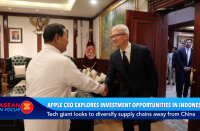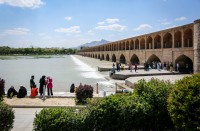The Association of Southeast Asian Nations (ASEAN) countries are due to become an integrated market by the end of this year, but concerns over the wealth gap persist.
From wealthy Singapore to impoverished Myanmar, countries in the region are together aiming to form the market body that will eliminate non-tariff barriers and remove obstacles to labor flows in the region of 600 million people.
“There will be more challenges for the local businesses as there will be a lot of products imported from other countries with different brands, and we have to open up the market,” said U Myat Thin Aung, a member of Myanmar Chamber of Commerce, in his office in Yangon.
But in ASEAN’s biggest economy, Indonesia, the upcoming integration has been seen by some in a more positive light.
Fitria Nahdi, who is running a handmade jewellery business in Indonesia’s capitalJakarta, has been exporting her goods to several ASEAN countries like Singapore,Thailand, and Philippines.
She is looking forward to the full establishment of the ASEAN economic community (AEC) .
“It’s not only about price competition or being tax free, the products I sell have a special touch (of culture) and not everyone can do that, so I’m very optimistic,” she said.
According to 2013 data from ASEAN, the region has a combined gross domestic product (GDP) of over 2.3 trillion, which implies it could rank as having the seventh largest GDP in the world – a promising prospect for many.
Thailand’s Finance Minister Sommai Phasee said the AEC initiative is likely to improve competitiveness in the country and increase productivity, particularly in the agriculture industry which includes rice, rubber, and palm oil.
He nevertheless felt more work needed to be done on the ground in the country before any agreement could be concluded.
“Now we are focusing on our weak points, looking into the raw materials (that Thailandproduces), looking at improving our export competitiveness, restructuring the BOI (Board of Investment) in order to stimulate investments and get back onto the right track,” said Sommai.
Despite the fast-approaching integration plan, newer ASEAN members like Cambodia,Laos, Myanmar and Vietnam are still not fully involved in the regional bloc. Only six out of 10 member states are part of the ASEAN Free Trade Area (AFTA) deal, one of the mandatory commitments needed to form the AEC.
The region has certainly shown potential to be a major market, particularly considering data has shown Foreign Direct Investment (FDI) in ASEAN to have outpaced that inChina in 2014.
Singapore – the country with highest GDP per capita in the region, for example, is likely to benefit substantially from the deal.
Rajiv Biswas, the Senior Director and Asia-Pacific Chief Economist of IHS (Information Handling Services) in Singapore, felt the economies of developing countries would definitely get a boost from the integration which will subsequently attract investments.
“I think the next stage of liberalization of tariffs on goods will bring in countries likeMyanmar, Vietnam, Cambodia and Laos and these are also very low wage countries, so they also stand to benefit very much, if they can create a competitive environment to attract foreign manufacturing in,” said Biswas.
Failure to meet the ambitious goal of the AEC would risk undermining ASEAN’s credibility at a time when it faces unprecedented divisions over maritime disputes withChina.
Founded in 1967 in the midst of Cold War conflicts, insurgencies and coups inSoutheast Asia, ASEAN has become the region’s most successful grouping, credited with preventing strife and promoting a surge in trade and investment.
The goal of creating an AEC by the end of 2015 was set back in 2007.
Reuters







